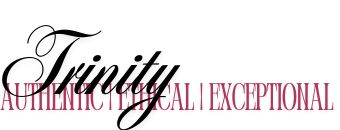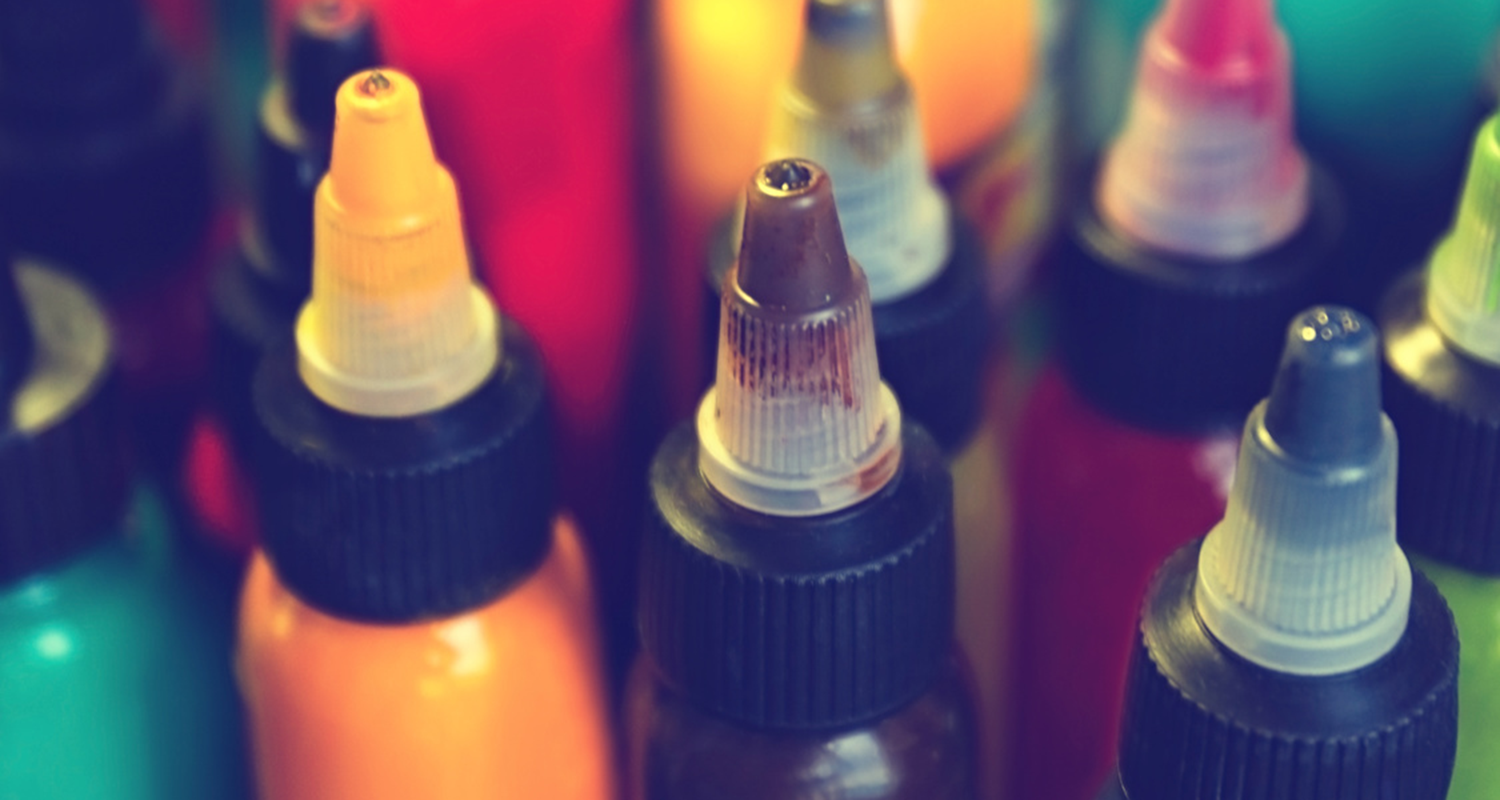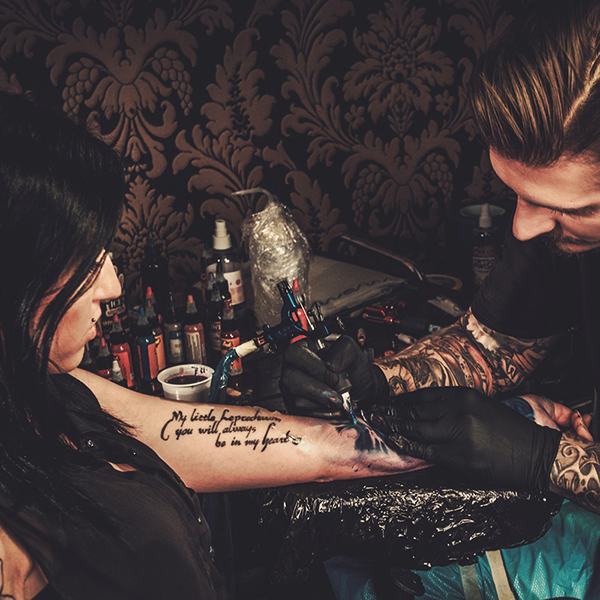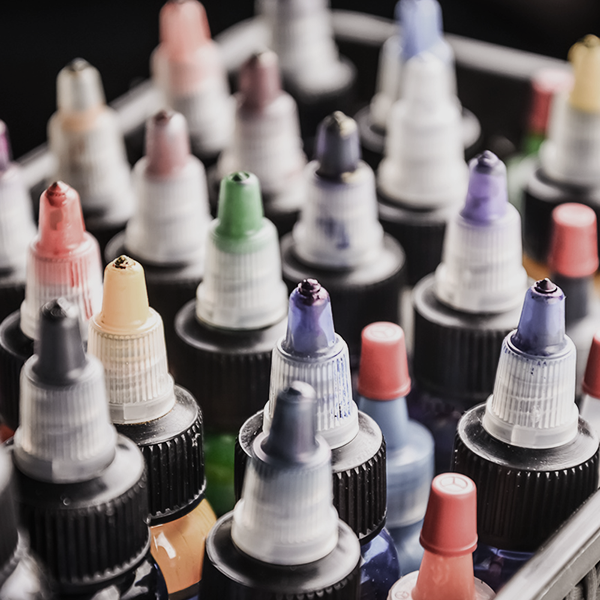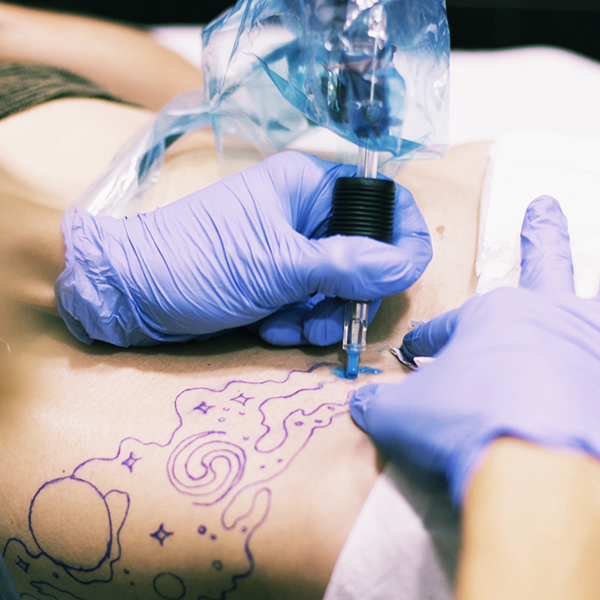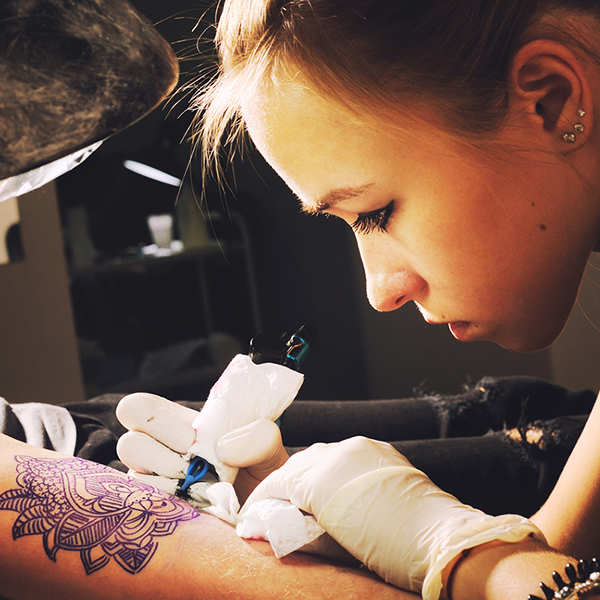China is often recognized as one of the largest producers of counterfeit goods in the world, but the country’s black market goes far beyond selling knockoff electronics and luxury goods. Chinese manufacturers have also been producing fake versions of many of today’s most popular tattoo inks (including INTENZE, Starbrite, Immortal, Kuro Sumi, Skin Candy) and selling them online as the “real deal” at discounted prices.
Although buying ink from non-reputable sources, including wholesalers and sites like eBay, may save you some money, fake ink comes with some serious dangers. While ink producers in the United States follow numerous regulations to ensure quality and safety, manufacturers in China are much more lenient in their production standards, as there is no one regulating their processes. What’s more, if you’re unhappy with the products you receive or their outcome, good luck trying to find someone to contact. It’s this lack of accountability that gives fake ink manufacturers the ability to cut corners, all to make a quick buck.
One of the biggest differences between the real deal and cheap alternatives coming from China is just how much pigment is in each bottle. It’s the most expensive ingredient and the easiest way to tell if you’ve got a counterfeit product is by looking at how watery is.
As a general rule of thumb, the thicker the ink is, the more pigment it has and the higher its quality is. In addition to a watered down colour that will deliver poor results, there is no telling if such inks have been contaminated during the production process or if they contain cheap, potentially harmful and toxic ingredients.
New Zealand has actually banned the sale of unidentified, low-quality ink after the Environmental Risk Management Authority (Erma) discovered that “some ink samples from these tattoo kits contained a metal that was prohibited by New Zealand’s Cosmetic Group Standards. There have been numerous reports about weird reactions and health concerns from people that have been tattooed with China tattoo ink.”
Research conducted by Australia’s National Industrial Chemicals Notification and Assessment Scheme (NICNAS) in 2014 and 2015 confirmed that “inks purchased from unauthorized resellers on eBay carry the highest safety risk” and carcinogenic breakdown products.
Speaking with Inked Australia following the discovery, Josh Roelink, president of the Australian Tattooists Guild, explained that “the real danger with tattoo ink is the sale and import of untested and unregulated inks being bought via online platforms such as eBay, which are then being used by unqualified members of the public… it’s not just cross contamination issues that are the danger, but also the ink ingredients of pigment bought on online marketplaces, especially those with legitimate brand names sold on eBay which are almost always fake imports from China. There is no telling what is in those inks, it’s a major concern.”
The solution is to always buy your ink from a legitimate distributor and to ask them to provide you with all the material safety data sheets (MSDS), as well as EU CTL Certification, which is the highest standard of toxin, amine and carcinogen screening available. Once you receive the ink, it’s always good practice to check the ingredients and look closely at the labeling. Sometimes, inks being sold as tattoo ink actually have warnings right on the bottles that state they are NOT suitable for tattooing.
So what are some top tips for spotting fakes? According to The Illustrated Man who bought counterfeit Kuro Sumi ink to compare it first-hand to the legit version, there are numerous telling signs you can look out for. Here’s what he found:
- Discount retailers and wholesalers who appear to offer a deal that’s too good to be true are most likely selling fakes. Known counterfeit distributors include: TMart, DHGate, TheLAShop, Cheap-Tattoo, Tattoo Kits Cheap, Wholesale Tattoo Kits and Tattoo-Set.
- Look closely at the bottle sizes. Kuro Sumi is not available in 8oz, 12oz or 16oz bottles. It is only available in 1/2oz, 1oz, 2oz and 4oz bottles.
- Check out the packaging. Authentic Kuro Sumi ink comes in a white box with a dragon logo and Kuro Sumi stamp and will never be sold in shrink-wrapped plastic.
- Pay attention to names. Original Kuro Sumi colour names include "Tsunami Blue" and "White Rice Mixing" while counterfeits range from “Shallow Pink” to “Snot Green”. Fakes also often include spelling mistakes, like “Light Gerrn”.
- Shake up the ink and let it settle. If it separates in 15 minutes or less, it’s likely fake. Also, pour a little bit out onto a paper plate and let it sit overnight. Scrape it with your fingernail the following day and see what happens. Real ink will form a “very shiny thin film gel” whereas knockoffs will flake and create dust.
A similar comparison was carried out on INTENZE inks by All About Tattoos. Like The Illustrated Man, they found some telltale signs that the bottles he purchased on eBay were in fact fake. When shopping for INTENZE colours, remember that:
- The bottom of each bottle should have Mario Barth's ‘M’ logo, no bar code and should be made of tough plastic.
- Just like with Kuro Sumi, INTENZE originals will never be packaged in shrink-wrapped plastic.
- Real INTENZE ink has an internal foam seal and an implant-grade stainless steel shaker ball inside. Fakes usually use a plastic seal and contain no shaker ball.
What all of this translates into is the simple fact that if a deal seems too good to be true, it probably is. But if, for whatever reason, you aren’t able to buy from your preferred brand directly, ask to see some paperwork, whether it be material safety data sheets (MSDS), EU CTL Certification or even a delivery invoice. This way, you can rest assured that the seller’s source of ink is a reputable one because if they have nothing to hide, they should be willing to share this information with you openly.
